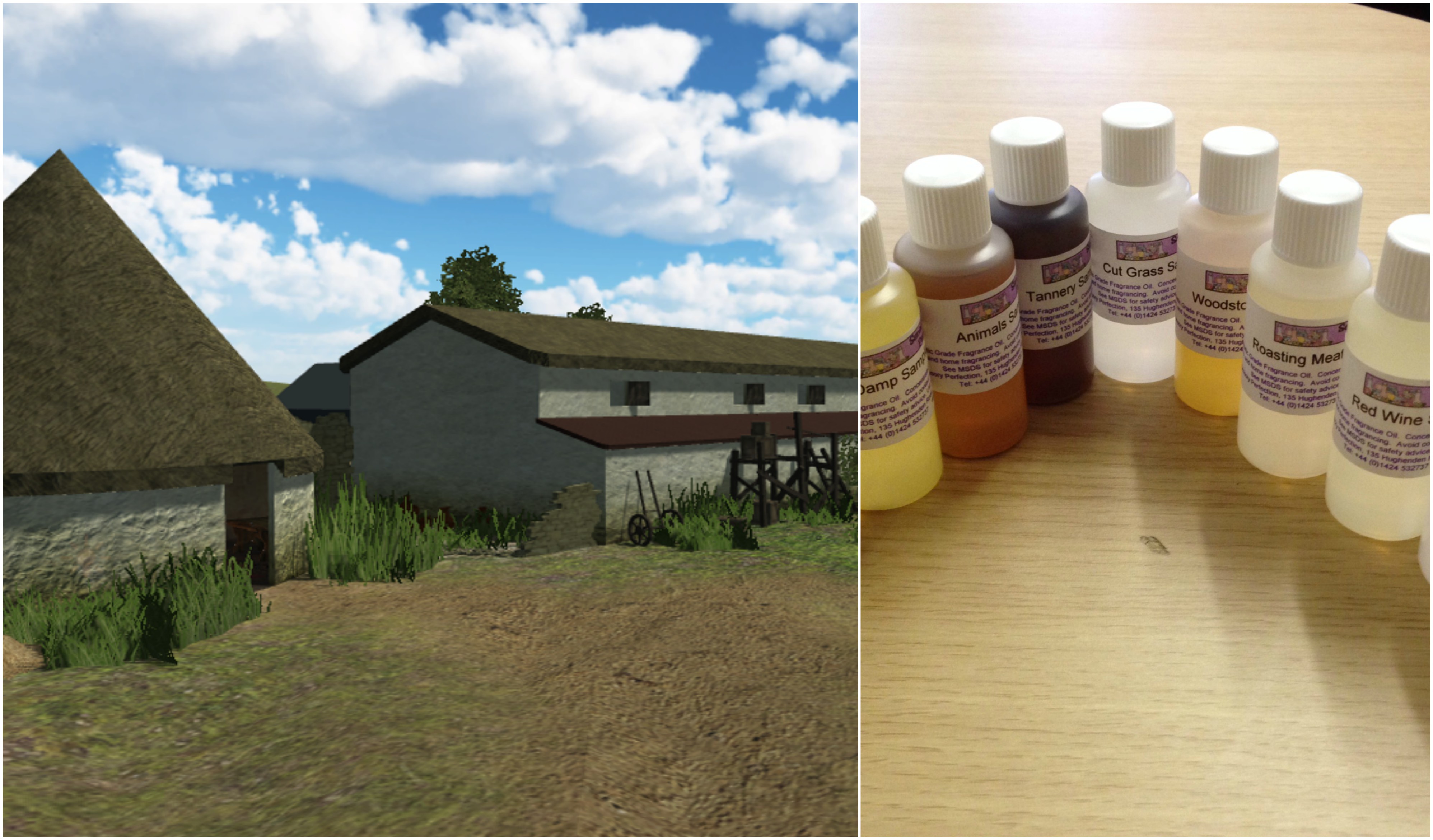Virtual reality experience allows you to walk around and even SMELL this Roman town
Release Date 20 October 2016

A unique virtual reality experience has been created to allow users to explore a Roman town, and even discover how it would have smelled 2,000 years ago.
Users can ‘walk around' an interactive reconstruction of a real Roman neighbourhood, excavated at Silchester near Reading, while everyday sounds and smells are triggered as you move through different zones.
It will be a highlight of Roman Army Week being held at Fishbourne Roman Palace during half term (October 24-28).
Visitors to the virtual reality room will find themselves surrounded by the sound of dogs barking, tools banging and flies buzzing, and the smell of animals, the herb garden and even the cess pit.
The original system is the creation of Dr Ian Ewart, anthropologist at the University of Reading's School of the Built Environment, who devised it after realising there was nothing currently available that would allow him to investigate such an immersive space.
Dr Ewart said: "Virtual reality spaces are becoming more common in everyday life, from gaming to architecture and design, alongside the recent arrival in our shops of a range of VR headsets. However despite this explosion of uses, all these experiences are dominated by one sense - vision."
"In reality, we experience the world through all our senses. Sounds and smells play a vital role in how we perceive the environment around us, generating powerful emotions such as nostalgia, joy or disgust, yet their use in models of the built environment is largely ignored."
State of the art research
The experience is based on records gathered by Reading archaeologists investigating a block of Roman Silchester to provide details of life there.
It is part of a larger project to investigate how we can model and analyse multiple senses of the built environment, with principal investigator Mr Ewart gaining funding from the Arts and Humanities Research Council.
Co-investigators on the project are Dr Hannah Platts, Roman historian and archaeologist at Royal Holloway, University of London and Dr Tony Krus, archaeologist at the Scottish Universities Environmental Research Centre. They are also being advised by Kate McLean, sensory designer and smell specialist at Canterbury Christ Church University.
While the virtual reality attraction will create a memorable part of this event, the development of models of the built environment more generally has wider applications in architecture and design, urban planning, museums and education.
State of the art research like this will feature in future teaching and learning at the new School of the Built Environment at the University of Reading. Significant investment was announced this summer to refurbish the existing home of the School of Construction Management and Engineering.